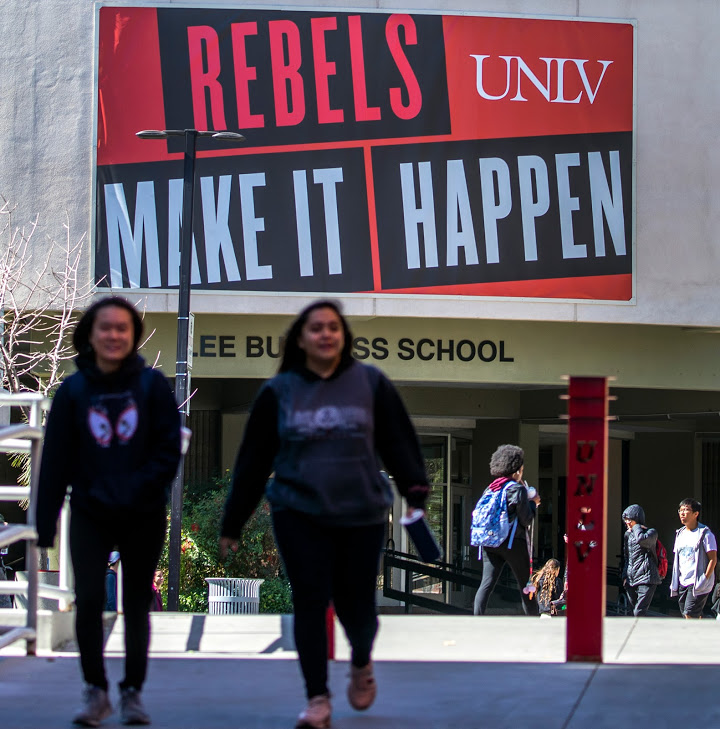Nevada achieves ‘first’ with higher education diversity, but more needs to be done

In late April, Nevada achieved a first when it appointed Dr. DeRionne Pollard as the new president of Nevada State College. For the first time in state history, our eight public institutions of higher education and the chancellor’s office are being led by women and/or people of color. (For the record, Nevada is not the first in the nation: At least one other state – Vermont, in 2019-2020 – had women and/or people of color leading its public universities and colleges). The leadership of Nevada’s public universities reflects the increasing demographic diversity of the Silver State, but does it matter?
Yes, it matters. First, scores of studies reaffirm the various direct and indirect benefits of increasing diversity within businesses, organizations, boards, schools, etc. However, the face of university leadership today looks much like it did decades ago. According to a 2017 American Council on Education study, in the United States, only four percent of university presidents are Latino, eight percent are African American, and 30 percent are women. Additionally, “[I]ndividuals who identified as something other than white held just 17 percent of college and university presidencies in 2016, while representing 42 percent of students enrolled in 2015. Among the presidents of color, 36 percent led two-year associate, or two-year, colleges; only five percent identified as women of color.” Given these statistics, Nevada’s roster of eight higher education leaders (and a chancellor) who are women and/or people of color is impressive and noteworthy.
Second, it matters because of the direct and indirect effects diversity can have on students. The current slate of institutional presidents from diverse backgrounds mirrors the rich cultural and ethnic mix of students on Nevada’s campuses. As of Fall 2019, almost 60 percent of students at the Nevada System of Higher Education’s (NSHE) seven degree-granting institutions are women. More than half are non-white; of these students, 30 percent are Latino, almost 11 percent are Asian, and seven percent are African American. This diversity, particularly in Southern Nevada where approximately 60 percent of the student body identifies as non-white, has prompted U.S. News and World Report to name UNLV as one of the most diverse universities in the country for several years. All but two of Nevada’s degree-granting institutions have achieved federal designation as a Minority-Serving or Hispanic-Serving Institution.
Admittedly, measuring the direct impact of diverse leadership on students and outcomes is challenging. But one only needs to look at a president’s priorities and policies to identify ways that it matters. In recent years, Nevada’s community college campus presidents (most of whom arrived less than four years ago) have revamped the advising system to improve the retention and graduation rates of all students. Under President Vincent Solis at Western Nevada College, the Latino Cohort, a program designed to “help students overcome cultural barriers” and support first-generation students, has expanded. Led by President Federico Zaragoza, the College of Southern Nevada (CSN) recently launched the Empowerment Network Initiative, an identity-based cohort program that assists and empowers students. In recent weeks, UNR, under the new leadership of President Brian Sandoval, has responded to a student petition asking that the campus fund the Social Services Coordinator position to help undocumented students.
These types of efforts and targeted programs can likely help address persistent achievement gaps that exist in Nevada’s (K-12 and higher) educational systems. In 2019, the graduation rate for African American scholars at CSN was three percent compared to 12 percent for white students; the graduation rate for Native American students at the University of Nevada, Reno was 29 percent compared to 64 percent for white scholars.
While we should celebrate the diversity at the top echelons of our universities and colleges, it is important to note that this cultural, racial and gender variation does not exist among the rank and file. According to NSHE, 67 percent of all employees (including administrative and support staff) are white, 12 percent of all NSHE are Latino, almost nine percent are Asian, six percent are African American, and less than one percent are Native American.
According to the National Center for Education Statistics (NCES) compiled by Pew Research, as of 2017, 76 percent of postsecondary faculty members in the United States were white, 11 were Asian, six percent were African American, and five percent were Latino.
Nevada, not surprisingly, looks like the rest of the country. Table 1 below presents 2019 NCES data on the gender, racial, and ethnic breakdown of all tenured faculty (including full professors, associate professors, and assistant professors) at each NSHE degree-granting institution. As shown, 77 percent of tenured postsecondary faculty members in Nevada were white, 13 were Asian, three percent were African American, and five percent were Latino. Women account for 38 percent of all tenured faculty in these NSHE institutions, and half of all tenured faculty at Western Nevada College, and Great Basin College, which is led by President Joyce Helens. Women account for 31 percent of tenured faculty at UNLV. White men account for at least half of tenured faculty at Western Nevada College and University of Nevada, Reno. According to UCLA Professor Mitchell Chang, colleges haven't invested enough in retention or addressed the structural barriers that often derail faculty of color."
Table 1. Demographic Composition of Tenured Faculty and NSHE Degree-Granting Institutions
Table key: M+W = men plus women of group as percentage of total tenured faculty
Increasing the diversity of faculty can positively affect student outcomes. Some experts have suggested that one of the main problems with the lack of diversity among faculty is that students may not see themselves reflected in their professors, which can “impact student retention as well as enrollment rates.” Research finds that “a more diverse faculty produces better graduation rates across the board.”
Increasing the diversity of faculty is also critical to expanding the pipeline of future administrators and the next generation of university presidents. This starts by addressing the composition of tenured faculty from which deans and provosts – and ultimately presidents – are drawn. As was noted by Jacqueline Bichsel, director of research at College and University Professional Association for Human Resources (CUPA-HR), “When you’re not promoting women and minorities to full-professor positions, you’re taking them out of the running for those higher leadership positions, particularly for the roles of provost and president.”
Ideally, our presidents – new and seasoned – will draw attention and focus to the diversity of faculty and explore ways to expand the pipeline of female doctoral students and doctoral students of color and to support researchers of color and women who are in the early stages of their career. At the end of the day, strong, dedicated, intentional leaders – regardless of their gender, race, or ethnicity – are critical to improving outcomes for students and strengthening pathways to success. Yet, these trailblazing leaders cannot address the persistent issues of student achievement gaps and lack of faculty diversity alone. We must all – regardless of our own gender, race, or ethnicity – be committed to equality within higher education. We must follow our “first” in education leadership diversity with a “first” in overcoming student disparities and a “first” in faculty and administration diversity. We must recognize that these achievements benefit us all as Nevadans. So let us hope and commit to our recent “first” not being our last.
Nancy Brune, Ph.D. is the founding executive director of the Guinn Center, a statewide, independent, nonpartisan policy research center. She is a senior fellow at the Boyd School of Law and serves on the Law and Leadership Program Advisory Council. Dr. Brune received her Ph.D. from Yale University and her Master of Public Policy and B.A. degrees from Harvard University. Prior to joining the Guinn Center, she was a senior policy analyst at Sandia National Laboratories, where she worked on issues of national security. You can follow her on Twitter @NancyBrune or email her at [email protected].
